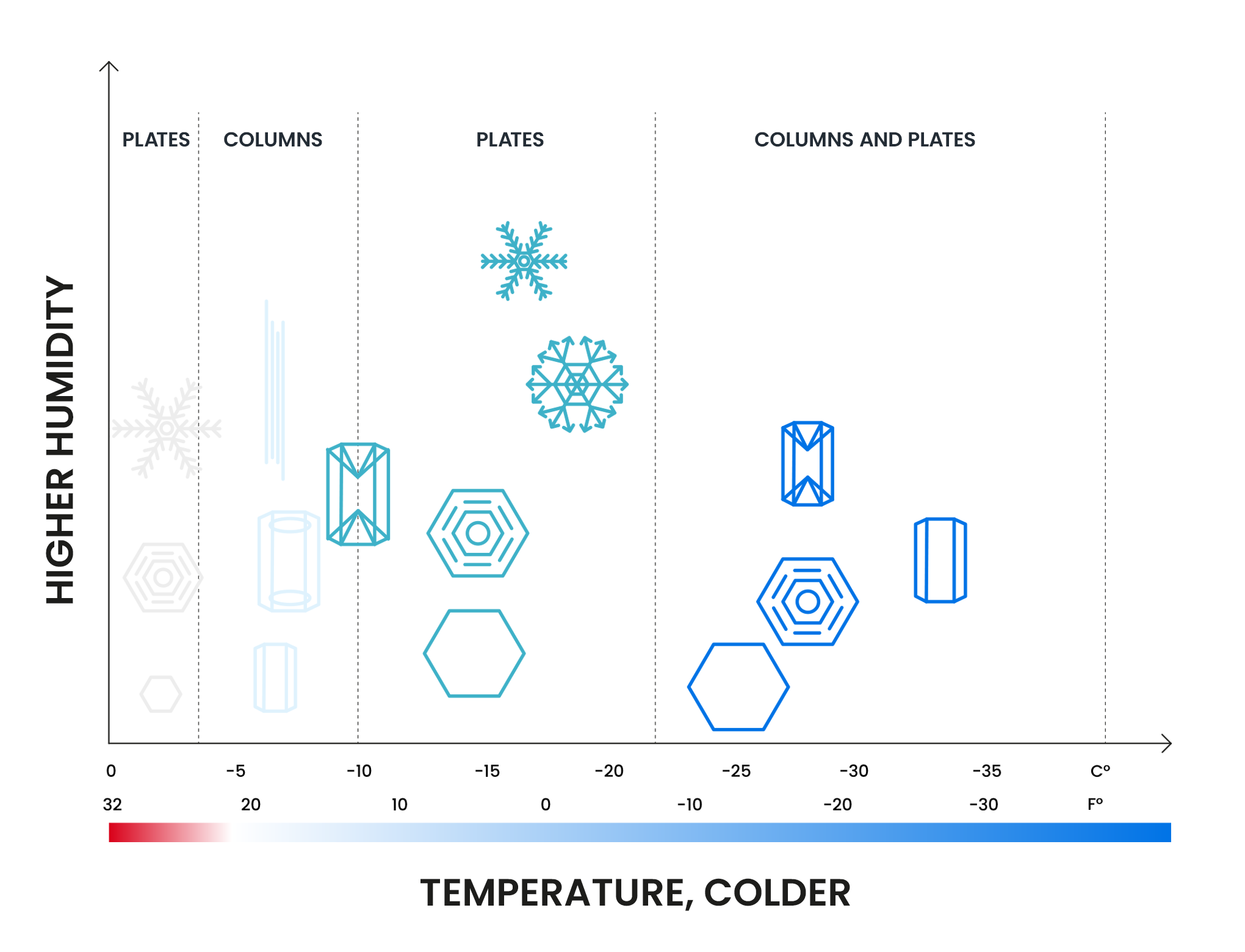- Maintenance tips & tricks
- 4-season garden care advice
- News from the gardening world
- STIGA innovations & new product launches
Snow crystals, between science and magic
Did you know that every snowflake is unique? True micro-architectures, snow crystals tell an incredible and ever-changing story. Find out how they are born, what they are made of and what characterizes their delicate beauty.
.jpg)
Few atmospheric phenomena have the charm of a soft snowfall that covers a vast snowy landscape. Snow has always had the ability to transform ordinary reality and welcome us into a fairy-tale and muffled world, where time seems to be marked by the slow pursuit of flakes. But what are the secrets of this enchantment? How are snowflakes formed and why?
These questions have aroused the curiosity of scholars and enthusiasts of all ages, not least Kenneth G. Libbrecht, physicist at Caltech (California Institute of Technology) and a true authority on the subject, who has devoted numerous studies and even has a site.
Inspired by his passion, we have collected in this article some of the curiosities about snow and its crystals.
How are snowflakes born?
Snow flakes or crystals? The two terms are often used interchangeably, in reality snowflakes are the result of the aggregation in flight of a certain number of crystals which represent their basic unit. So how are crystals formed?
Not to be confused with hail or sleet, or with raindrops that freeze when falling; the crystals are produced by the direct transformation of water vapor (aggregated with dust particles) into ice, without therefore passing through the liquid state.
The result is usually a hexagonal nucleus with 6 offshoots that grow symmetrically and simultaneously, thanks to the continuous adhesion of other water vapor as the crystal passes through the clouds. In this way the crystals form, grow and structure themselves, creating those geometries that enclose a unique spectacle in just a few centimeters.
Each snow crystal is as unique as its story
The shape and development of a crystal are due to the temperature and humidity conditions it finds during its fall. For example, at 0°C the snow crystals take on simple shapes which become more complex and branched if the temperature decreases or the water vapor increases during its descent.
It means that every snowflake is different from another one. Each falling crystal encounters different temperature and humidity conditions, or traces, giving each snowflake a unique and unrepeatable path that determines its shape and size.
Delicate, evanescent, as precious as diamonds, crystals give rise to true micro-architectures of ice capable of fascinating and astonishing us with their elegant variety and complexity.
The very particular shape of snowflakes has always surprised scholars, so much so that the first observations date back millennia: in 135 BC. Han Yin noticed that while flowers usually have five spikes, most snow crystals have six. In the XVII Kepler himself became interested in the subject in a more systematic way, while among the more recent scholars we should mention the Japanese physicist Ukichiro Nakaya, (1900-1962). His analysis results in a brand new diagram that shows and describes the morphology of snow crystals in relation to gas/fog, temperature, and other variables.

According to the diagram elaborated by Nakaya, the crystals can be morphologically identified in 3 large families: the dendrites or stars, the plates and the columns.
In 1951 a further classification into ten typical forms was released by the IACS (International Association of Cryospheric Science) and continuously updated until the last edition of 2009.
Between science and poetry: the magic of snow
If on a scientific level there are still many questions to be clarified, snow continues to represent a small great miracle that for an instant suspends the daily flow of our days. An event that surprises us every year with its delicate beauty, bringing a little magic and wonder into our lives, whatever our age.
Snow is not an enemy of the garden
Snow is not only a wonderful winter sight, but it also plays an important protective function towards the lawn. Fresh snow acts as a natural insulator and keeps the soil warm, protecting plant roots from intense cold.
In addition, snow can also act as a soil moisture preservative. For this reason, it is important to avoid totally removing snow from the garden unless it is strictly necessary. If you would like to learn more about the benefits of snow for your garden, we recommend reading the articles in our magazine.
However, there are some situations where snow removal is necessary, such as on driveways, stairs, and sidewalks, to ensure safety and ease of movement.
In these cases, it is important to use the right STIGA product for your needs.
For fresh snow and up to six inches, we recommend the ST 300e and ST 700e. If, on the other hand, the snow is heavy and icy, our petrol snow throwers are the ideal solution. Finally, for large spaces that need to be cleared of snow, STIGA sweepers are a perfect choice. Choose the right STIGA product for you and remove snow effectively and safely.



















